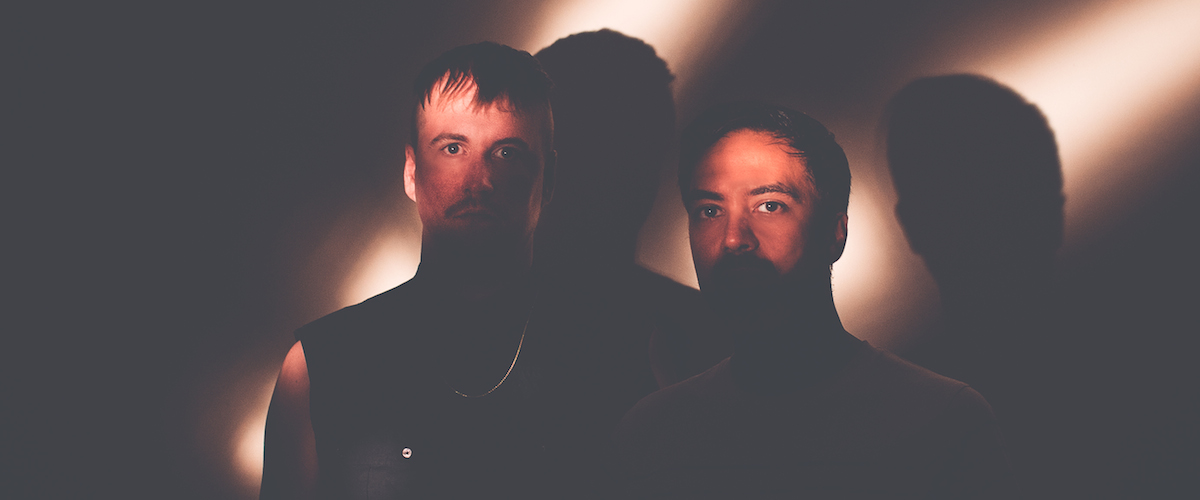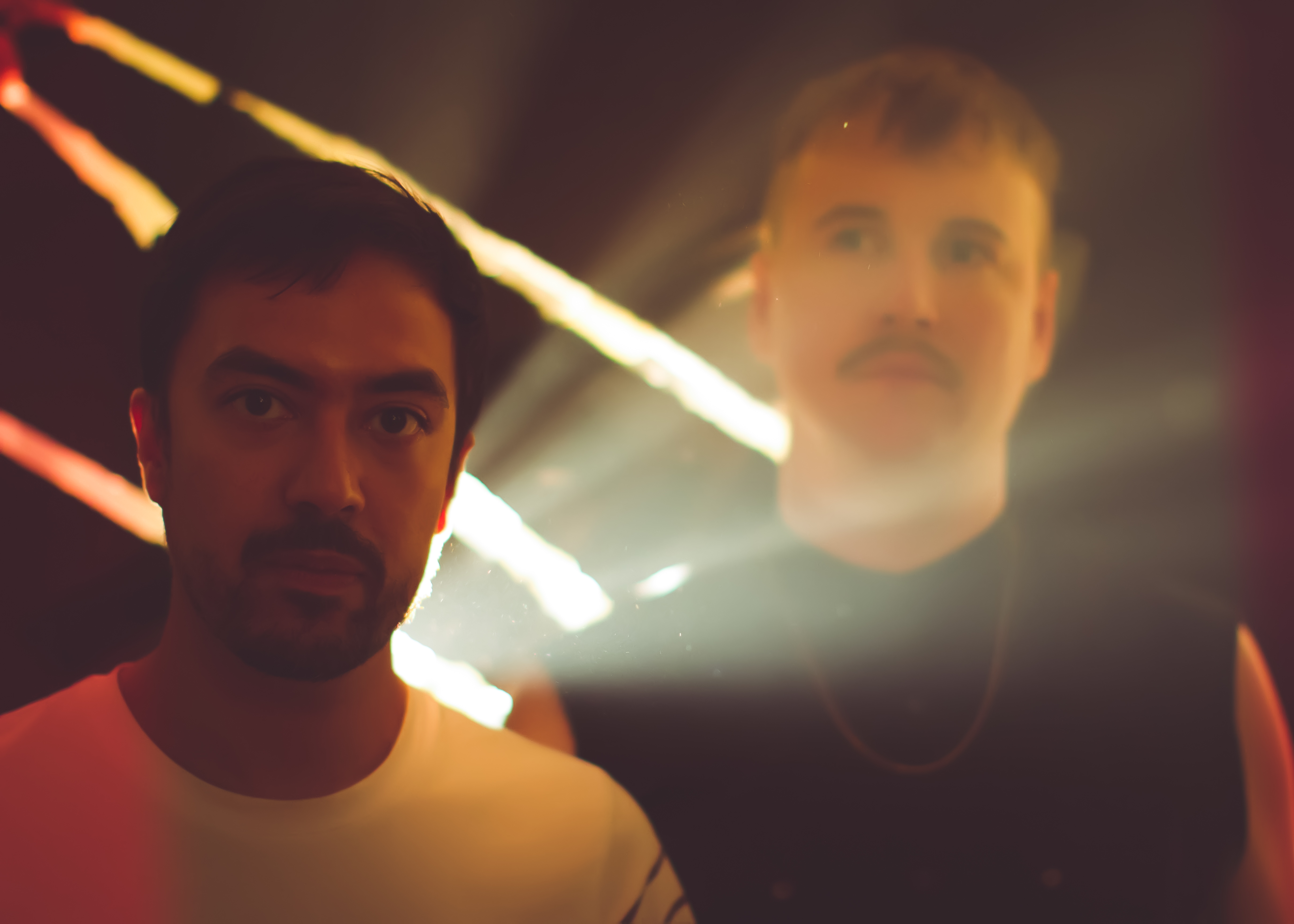Real Talk: Sepalcure
Travis Stewart and Praveen Sharma discuss the benefits of constraints in the creative process.

Real Talk: Sepalcure
Travis Stewart and Praveen Sharma discuss the benefits of constraints in the creative process.

Real Talk‘ is a series of artist-penned essays that appear on XLR8R from time to time.
This week’s submission comes from Sepalcure, the project of North Carolina’s Travis Stewart (better known as Machinedrum) and Praveen Sharma (a.k.a. Braille). As solo artists, work from the duo can be found on an array of leading labels, including Glass Table, Rush Hour and Ninja Tune; releases from their musical collaboration, which was founded in 2010, have come exclusively through Scuba‘s Hotflush, the latest of which is set to land May 20 in the form of an 11-track LP, entitled Folding Time. Given the wealth of studio experience that the duo can count on between them, it seems like there are not too many artists who are better equipped to pen an essay about the world of production and the numerous challenges that accompany it. After some thought, they decided to write about the effects of constraints in the creative process. This is what they had to say.
We’ll be honest: it was tough to figure out what we could offer to Real Talk which hasn’t been said by us before. We wanted to give others a glimpse into our processes as well as potentially benefitting artists starting out. After some brainstorming, the topic of constraints in a creative setting was something we thought might hit both of those points.
Maybe you don’t have the resources or desire to own or find every plugin; maybe you want to explore the sound set of a single processed instrument for an entire album; maybe you’ve decided to turn quantization off or on—these are all constraints which can benefit the creative process.
Specifically, there are two types of constraints we’re talking about: The first is constraining your toolset. This is a more important constraint than ever in a world where every tool you could want is practically at your fingertips. The second type of constraint we’ve embraced is a constraint in process. This is what an artist does with those tools to create their art.
Constraining your toolset
Praveen:
Travis and I started Sepalcure basically at opposite ends of the spectrum here. Through coming up with IDM and obsessing over the genre’s fetishism around plugins and detailed processing, technology was almost as important to me as the resulting music. I had found myself drowning in plugins. I was never sure what I should use at any given time, and the resulting indecision slowed down my process considerably.
There were constraints placed on our toolset from the start. A single DAW and a small subset of plugins were used so we could have more portable project files as well as a familiar toolset and faster process. I can’t remember how many times I would pull up some new fancy reverb or delay plugin only to waste half an hour creating an effect which we could have created using our standby plugins in a third of the time. Don’t get me wrong, I still love trying new things out, whether it be hardware or software. The difference now is when I find something we really like, it replaces something else in our day-to-day toolset. If every time a carpenter was putting together a table he used an entirely new set of tools, he would lose the confidence and efficiency that comes with using the tools he knows and loves.
When we started Sepalcure I had recently picked up a Juno 60. That synth and my Rhodes were used for nearly all of our keyboard lines in the early days. Even that constraint led to a more recognizable and familiar sound. In general, I try to keep my synth options constrained to the small collection of synths I have in the studio and try to avoid the multitude of plugins at my disposal.
“Instead of immersing myself in whatever amazing new plugin was available at the time, I kept it simple and worked with whatever came built in to Ableton. This was probably due to conditioning myself from my limitations and constraints placed on myself previously.”
Travis:
Praveen has always had a fairly modest setup, but compared to mine it looks like a million dollar studio! I come from a background of working with very little to make what I needed to make. I started using Impulse Tracker when I was around 13 years old. It was free, the file sizes were small and easily tradable online (back in the dial-up days). At that time, and for a long time after, I didn’t have much money to put toward music gear, so Impulse Tracker and whatever samples I could get my hands on were what I was stuck with. Little did I know that this would inform and influence the way I approach writing music to this day.
First of all, trackers, in general, aren’t very pretty to look at. They’re very binary looking and maybe not very intuitive at first glance. Luckily I grew up using computers from an early age, and I was pretty quick to learn difficult software (I’m 34 by the way so not everyone had computers as part of their daily lives back then!). Secondly, you had to really learn all the keyboard quick keys to navigate around. Impulse Tracker wasn’t really built to utilize the mouse as it was DOS-based. Old school! Thirdly, you were limited to however many samples you could load into your track without crashing your computer. Keep in mind this is back when you were a baller if you had 1GB of hard drive space and 8MB of RAM on your computer. As a result, you had to pick and choose your samples carefully and use them creatively in order to make a cool sounding track.
Eventually, after a good 10-12 years of using Impulse Tracker as my main production tool, I started using Ableton. I found it easier and quicker to get my ideas out using it, and it had a much easier learning curve than other DAWs at the time. It was a bit daunting at first because suddenly I had opened myself up to a vast sea worth of plugins at my disposal. Instead of immersing myself in whatever amazing new plugin was available at the time, I kept it simple and worked with whatever came built into Ableton. This was probably due to conditioning myself from my limitations and constraints placed on myself previously.
Since then, I’ve carefully opened myself up to other plugins and studio hardware. Each plugin or piece of gear had to really grab me in some way that made me feel like I wanted and needed it in my life. I usually leave it up to my studio junkie friends like Praveen to let me play with their toys before I will ever consider buying anything. It had to be a special moment for me to actually decide to add something to my setup.

Constraining your process
Travis: The idea of capturing the moment as quickly and accurately as you can in the studio is an ethos I’ve stood by for a while now, and it’s something I’ve become known for. I have believed for a long time that it’s essential to extract as much as you can from the moment when you start writing a track. I feel that when you’re writing it’s like channeling an idea or message so that it becomes reality. If you focus on one part of that message for too long then you’ll lose the whole message.
The easiest example of this is when you start a beat and spend an hour or more trying to make your kick drum sound amazing. Once you get that kick sounding great you’ll be lucky to still have any clue what idea inspired you to start writing the track at all. It’s important to get out a rough sketch of what the song will be at first so that when you go back to it at a later time it’s easier to jump right back into where you left off, rather than being stuck thinking, “What was I trying to do here?” Get the basic rhythm, bassline, melody, and even arrangement written if you can. Then, once you have a decent sketch, you can start going back and refining elements so that it sounds lit, hype, face melting, chill as hell, or whatever you want to call it.
“It was an intentional decision to start almost all the percussion with just a cardboard box, some drumsticks and a vase.”
Praveen:
I actually learned a lot from Travis’ process. From a more conceptual level, I really tried to constrain my process for my debut Braille album, Mute Swan. It was an intentional decision to start almost all the percussion with just a cardboard box, some drumsticks, and a vase. That decision really informed the output and also forced me to be creative with how I manipulated most of the percussion afterwards. I like to pick a few key effects and instruments when writing a collection of work—that simple constraint can result in a cohesive sound (if that’s your goal). For Songs Spun Simla, for example, I based the entire album around a small collection of instruments that I had brought home from India. I feel like that album has a very specific sound.
Conclusion:
There are no “right” answers here, but hopefully, this got you thinking a bit. Go grab a coffee or your beverage of choice, bring a notebook and think about how you might apply constraints to your next project. Who knows where you’ll end up.

